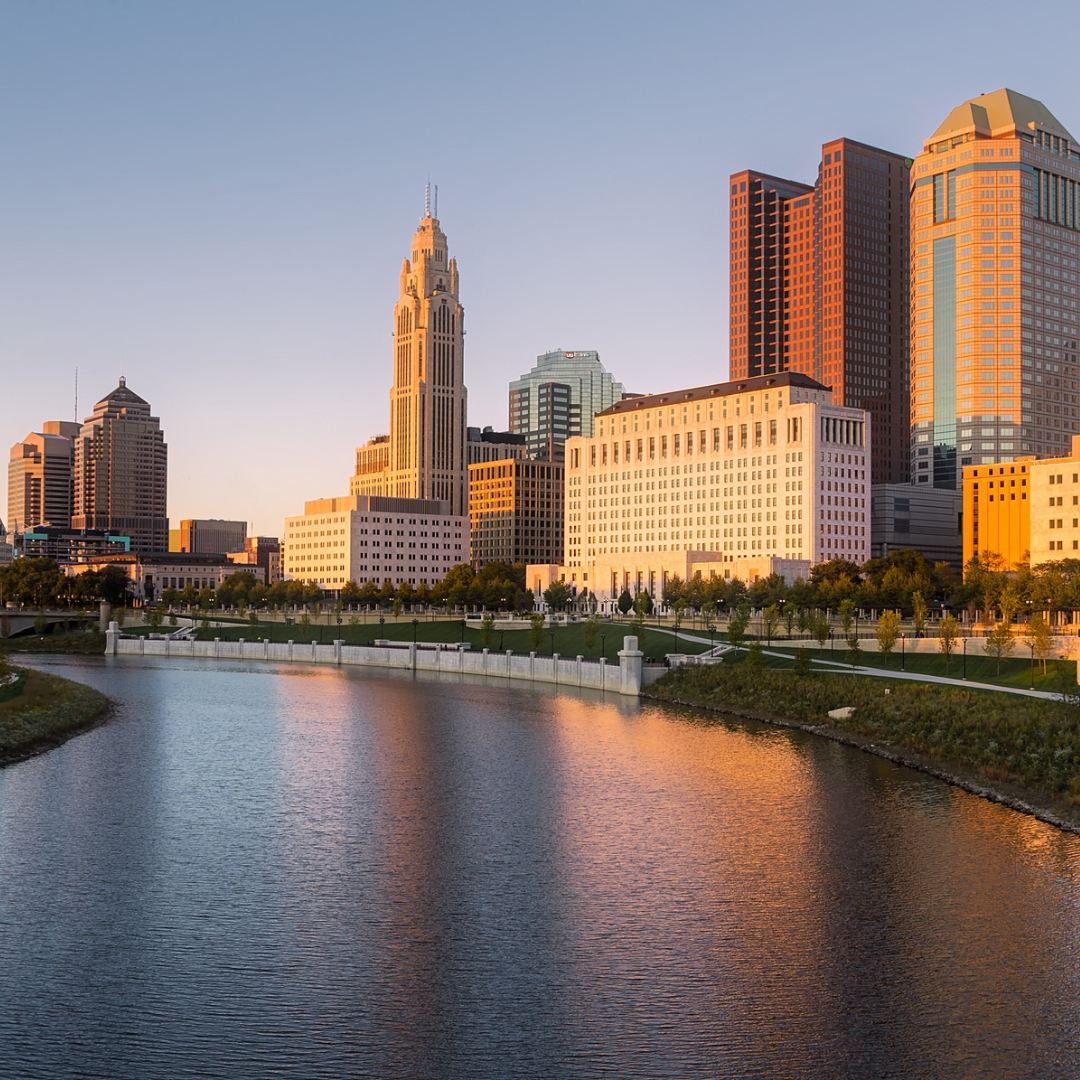The Biggest Changes to Columbus, Ohio in the Last 10 Years

In the past decade, however, Columbus has shown a remarkable change in various aspects, establishing itself as a new urban center that is vibrant and inclusive. The transformation is quite responsive to the shifts in population growth, improvements in infrastructure, economic diversification, and enrichment in culture, changing the ever-dynamic nature and resilience of the city. Strategic planning, community engagement, and commitment to an innovative environment that appeals to a much-diversified audience are a few, among other enabling factors, that have contributed to the change.
Population Growth and Urban Development
Always ranking in the list of fast-growing cities in the U.S., the past decade threw over a million on it. With more than 900,000 inhabitants, it is now the biggest city in Ohio. Trend reports by the U.S. Census Bureau make it evident that this will continue, with changes in demographic by migration shaping its direction toward a more urban lifestyle. With this increase in population came heavy urbanization all over the city, a force dictating the need for and the design proposals for housing, public amenities, and commercial spaces.
Older neighborhoods have undergone revitalization projects to meet the needs of this new growth. The Short North Arts District is one such example of this change, evolving from a small arts community to a busy district for art, dining, and nightlife. Once mostly an artists and gallery area, the Short North is now home to contemporary apartments, boutique hotels, and cutting-edge restaurants that appeal to locals and tourists alike. Besides this, the likes of Franklinton have undergone a significant transformation, where colorful murals, gallery spaces, and creative businesses have brought a new spark to the area, making it cool and accessible for locals as well as visitors.
There is now a general movement to preserve this historic and old character of long-standing neighborhoods. This juggling blend between modern needs and historical legacy exemplifies Columbus's efforts in sustainable urban development, whereby new projects serve their contemporary lifestyle demands while remaining sensitive to the context of existing urban fabric.
Economic Diversification
The economic landscape of the city has also seen considerable diversification; Columbus's traditional reliance on steel and other manufacturing industries has been weakened. Columbus shares its space with familiar employers like Nationwide Insurance and The Ohio State University, but it has also been expanding with booming sectors such as technology, healthcare, and education. It's this kind of diversification that makes a stable economy capable of absorbing the shocks in any of its sectors.
A flagship one is the Columbus Innovation District, which is supposed to place this city on the rapidly changing map of tech innovation. The district is supposed to provide an environment for collaborative work among startups, established businesses, and academic institutions-one that truly promotes innovation for economic development. The area attracts entrepreneurs because of the concentration of incubators and accelerators, which provide crucial resources like mentoring, funding prospects, and networking opportunities aimed at young professionals. The concentration on incubation and accelerator programs has prompted various job creation within the knowledge economy, bringing forth a heavy influx of skilled manpower and investment.
The Columbus healthcare sector has seen transformative advances in medical research and patient care, from the presence of large institutions such as OhioHealth and Nationwide Children's Hospital. Through pipeline partnerships with universities, advances are enabled along the lines of health technology, biotechnology, and personalized medicine; thus, making Columbus one of the leaders in the nation for health innovation.
Transportation and Infrastructure Improvements
Cognizant that population growth will enhance connectivity, Columbus has immensely prioritized significant investments in transportation and infrastructure improvements. The city's Smart Columbus initiative is regarded as an original, forward-looking plan for urban mobility modernization, using technological solutions to improve transportation systems and reduce congestion. Smart Columbus is a pioneer indication of how municipalities can use data and technology to create safer and more effective transportation alternatives.
Construction/integration of free CBUS circulator service is one core memory of the city-Smart Columbus initiative. It helps residents and tourists see Columbus, improve sustainable transit solutions, and overhaul pedestrian-and-cycle pathways. These options are the healthy, safe, green manner of transport that tends to lessen the city's carbon footprint. Investing in these means that Columbus achieves mobility enterprises while promoting economic growth due to the reliability of transport access which aids residents' reach to educational and employment opportunities.
To increase capacity and safety features, old unpredictable bridges and roadways are being redeveloped. These thoughtful infrastructure investments articulate the city-based broader goals of upgrading urban experience and persuading new businesses to settle in the area due to having improved levels of access.
Real Estate and Housing Initiatives
In Columbus, with the rise of the population, the demand for housing is rising, creating potential challenges associated with the gentrification process. In response to this concern, local organizations and city officials advised a number of initiatives aimed at making housing affordable for all residents. One of the major challenges that cities such as Columbus must face is: how do we ensure that economic expansion does not result in longtime residents being displaced or further worsen the housing situation?
City initiatives have taken multiple forms to mitigate such risks, thus making their forays into mixed-use development, combining residential and retail space into one. One of the more distant projects is the redevelopment of the former site of the Columbus Dispatch, changing that area into a mixed-use community with affordable apartments with green space and commercial offerings. Really, this project is what Columbus promises to do: an invitation to inclusive neighborhoods with varied socioeconomic backgrounds.
Furthermore, with the support of public-private partnerships, successful investment in affordable housing projects has been carried out through resource contribution from both the Government and private sectors, with a view to providing all residents with decent living conditions. These initiatives foster community participation and bring together multiple stakeholders in providing housing solutions within the overall context of ensuring that economic growth reaches all in the community.
Cultural and Recreational Enhancements
Culturally, Columbus has grown into that striking view one must enjoy; the arts and culinary destination showcases all the features of the city and its eclectic populations. The major cultural establishments include the Columbus Museum of Art and Franklin Park Conservatory, which underwent renovations and expansions to heighten the quality of its offerings and accessibility to the public. Such institutions are centers for protection of culture, history, and community engagement as well as education programming.
Columbus has also embraced its identity as a significant player in the culinary scene. The past decade has witnessed the emergence of an increasing number of farm-to-table restaurants, craft breweries, and food festivals highlighting the area’s agricultural richness. Events like the Columbus Food Truck Festival and the Columbus Craft Beer Week showcase local talent and bring together community members, fostering an appreciation for local culinary arts.
Annual events like the Columbus Arts Festival bring in thousands of visitors showcasing the work of local artists and musicians. The festival fuels the city with rich culture, promotes tourism, and becomes a stronghold for the city economy.
Parks and recreation opportunities have expanded tremendously to provide outdoor spaces for public purposes and amusement. Continued investment in parks, trails, and recreational facilities encourages active lifestyles, which enhances life quality and general residents' well-being.
Conclusion
In conclusion, Columbus, Ohio, has had a magnificent changeover over the last decade into a growing, vigorous urban center rich with growth in population, ample opportunity for diversified economies, improved infrastructure, and plentiful cultural amenities. This combination of fostering innovation, inclusivity, and sustainability spells great future in Columbus. As Columbus continues on this upward change, the encasement of these changes will probably lead to an influx of more populations, businesses, and tourism, establishing the city-in-us-the-North American design as well as an inviting and vibrant community. With the realization of these capabilities, Columbus is poised to face the future while remaining true to its historical character.
